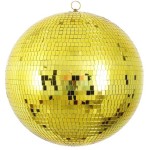New Words for Mirror Images: A Guide to Describing Reflections
The word "mirror image" is a common term used to describe the reflection of an object in a mirror. While simple and effective, it can sometimes feel limiting. Our language is rich with possibilities, and there are many other ways to describe reflections, each with its own nuance and evocative power. This article explores some of the less familiar vocabulary that can be used to paint a more vivid picture of mirror images.
Beyond "Mirror Image": Nuances of Reflection
The word "reflection" itself offers a starting point for exploring new vocabulary. It suggests the process of something being thrown back, a visual echo. However, the nature of the reflection can vary depending on the surface and the object being reflected. For example, a smooth surface like a mirror produces a sharp and clear reflection, while a rippled pond creates a distorted and fragmented image. This variation in clarity and fidelity can be captured through different words.
Here are some options to consider:
- **Specular reflection:** This scientific term refers to the type of reflection produced by smooth surfaces, where the angle of incidence equals the angle of reflection. It emphasizes the precision and sharpness of the image.
- **Diffuse reflection:** This occurs when the surface is rough, scattering light in various directions and producing a blurred or indistinct reflection.
- **Refraction:** This refers to the bending of light as it passes from one medium to another, such as from air to water, and can also create a distorted image.
Beyond the optical properties of the reflection, the language used can also evoke different emotions and associations. A "mirror image" might feel objective and detached, while other terms can add layers of meaning.
Words That Capture the Essence of Reflection
The way we perceive reflections can be influenced by the context and our personal interpretation. To convey this subjective aspect, consider using words that go beyond the purely descriptive:
- **Doppelganger:** This word, meaning "double walker," implies a sense of uncanny resemblance, as if the reflection is a separate entity.
- **Phantom:** This term evokes a sense of something ethereal and ghostly, suggesting that the reflection is not entirely real.
- **Counterpart:** This word emphasizes the duality and symmetry inherent in a reflection, suggesting that it is a complementary image of the original.
- **Ghost:** This term highlights the fleeting nature of the reflection, suggesting that it is an ephemeral and easily disrupted image.
These words can be used to create a sense of wonder, mystery, or even fear in the reader's mind. They can also be used to emphasize the psychological impact of seeing one's own reflection, as in the case of a doppelganger or a ghost.
Visualizing the Reflection
Finally, we can explore words that create a more vivid image of the reflection itself. These words can evoke the texture, color, and even movement of the reflected image.
- **Silhouette:** This term refers to the outline of an object, often seen against a contrasting background. It emphasizes the shape and form of the reflection, rather than its details.
- **Shimmer:** This word evokes a sense of flickering light and movement, suggesting that the reflection is not static but constantly changing.
- **Flicker:** This word similarly suggests a wavering or unsteady image, implying a sense of uncertainty or fragility.
- **Distortion:** This term highlights the way in which a reflection can alter the appearance of an object, often making it appear stretched or compressed.
By using these words, writers can create a more dynamic and evocative image of a reflection, one that engages the reader's imagination and invites them to see the reflection in a new light.

Positive Affirmation Mirror Set Now Elementary Classroom Decor Goals New

Inspiring Quotes Compact Mirror Calligraphy Words Of New Zealand

Instagram Captions For Selfie 170 Best Cool Stylish Mirror Selfies 91mobiles Com

You Got This Mirror Decal Words Of Encouragement Sticker New Zealand

New Zealand Sight Words Mystery Mirror

New Community Features For Google And An Update On Curs Mirror Quotes Inspirational Words

Light Up Mirror Box Sign Family Sentimental Words New Zealand

Mirror Words Whole Brain Teaching

Bending Words Advanced Rhyming Techniques In Rap Colemizestudios

Premium Vector Mirror Editable Text Effect 3 Dimension Emboss Luxury Style








